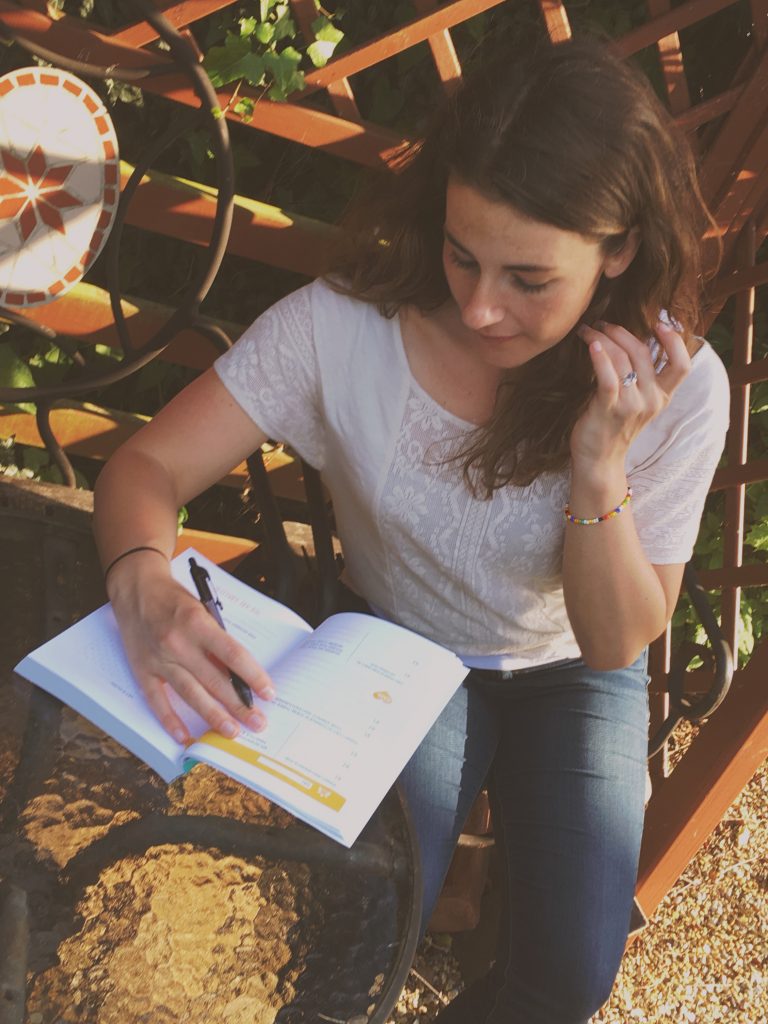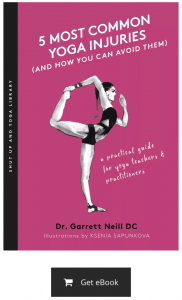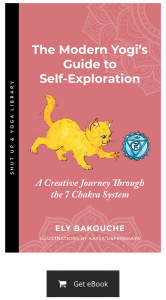Journaling to Support your Yoga practice
I love yoga. But I don’t always love doing yoga.
Since my practice began, yoga has been a keystone tool in my life, influencing my thoughts, actions, and relationships. But like any useful tool, yoga sometimes needs care, too.
I call these periods “yoga ruts”, or times when I struggle to find direction in my practice and my life. Instead of moving forward, I get stuck and sometimes avoid yoga altogether.
To dig myself out of these yoga struggles, I have discovered an effective tool: journaling. Journaling daily has surprising benefits, many of which intersect and amplify a yoga practice. It takes dedication, focus, and consistency, but the rewards are well worth the work. I used to think keeping a record of your daily activities and thoughts was kind of bullshit reserved for angsty teenagers. After using it to help create a fresh perspective, I can report that taking time to study yourself through journaling is for everyone, and it is awesome. Use these tips below to explore and support your yoga practice through writing and reflecting every day.
Start Your Self-Study
“I once read that people who study others are wise but those who study themselves are enlightened.”
– Robin S. Sharma
In yoga philosophy, there is a concept called svadhyaya which translates to “self-study”. It is the fourth of five niyamas, or observances, in the eight-limbed yoga path. To be well, we must first understand ourselves. After all, we are the root of our thoughts, actions, and reality. There is no “right” way to study yourself. Since I began journaling, I became more centered and in sync with myself. In an age where we are constantly focused on outward dialogue through social media, it Is powerful to shift that dialogue inward. While writing down your thoughts may not help you get into Hanumanasana, it will help you clarify your thoughts, behaviors, habits. Bottom line: you will learn a lot by studying yourself.

Keep it Consistent
“It’s not what we do once in a while that shapes our lives. It’s what we do consistently.”
– Anthony Robbins
For journaling to be the most informative to your self-study, it is best to keep it consistent and turn it into an everyday ritual. In turn, this helps to create a theme for the rest of your day, your actions, and your yoga practice.
Sticking to the pattern of exploring your internal thoughts through writing can give your day a healthy dose of structure that crosses over into other areas of your life. In other words, it creates a keystone habit- your daily ritual that acts as a catalyst that leads to changes in other areas of your life. It also serves as a bit of fire under your ass, inspiring you to step outside of your comfort zone and explore the unknown. Turning action into habit taps into the yogic concept of tapas, derived from Sanskrit “tap” meaning “burns”, relates to discipline and the burn that can come along with it. As your work through the burn or struggle with discipline, you are using tapas to work toward the light at the end of the tunnel, or in this case, a new habit.
When I first started journaling, I found it really hard. In order to make it bearable, I used to set a kitchen timer for 25-minutes to force myself to focus. As long as that timer was ticking, I was writing – even it if was sloppy scribbles! And over time, the process became easier and slowly morphed into something that was enjoyable. Bottom line: Consistency with focus is key to establishing a new ritual.
Find Your Flow
“Flow with whatever may happen and let your mind be free. Stay centered by accepting whatever you are doing. This is the ultimate.”
-Zhuangzi
The idea of journaling is great. After all, how hard can it be to spend time with yourself?
It turns out that it can be a lot harder than it looks.
When I decided to explore journaling, I sat down to write, expecting thoughts to spill onto the page effortlessly. That didn’t happen.
I became distracted after about three minutes, looking for any reason to do anything else. Why couldn’t I handle being with my thoughts for 15-minutes?
That’s the thing about journaling. It sounds simple, but in practice, it can be a challenge to actually do it. It requires dedicating time and focusing your attention, something that many of us feel limited on or stretched to do. In this way, journaling is like any practice that requires time and space to become truly immersed in the moment, a concept known as “flow”. It might be helpful to use a journal with a structure, such as questions or writing prompts, to help you explore when you don’t know where to get started.

Let yourself be You aka Journal Like a 9-Year Old
Sometimes we forget to have fun and just be ourselves.
When I was about 9 years old, I kept a daily journal for an entire year. I enjoyed journaling tI recently found this journal tucked away in a storage box in my childhood home.
Paging through the notes, stickers and daily musings brought me back to the struggles, joys and the inner workings of my nine-year-old self.
Although it was written over twenty years ago, I felt like I could still see some of my self in the writing. I still have some of the same friends, some of the same humor, and sadly, quite a bit of the scribbly, sloppy handwriting. It some ways, it was looking back at my young self, but also my elemental self.
Do you have a journal that you held onto from when you were younger? Find it. Look at it. Notice what has changed and what has stayed consistent. Practice santosha, or contentment with you are and have always been. Bottom line: Give yourself permission to just be you without worry of imperfection. Express yourself without limitation or fear.
Take Some Time to Explore the Archives
This final step takes a month or so to build so number one, you have content and number two you have some distance in between your writing so you can read it from a different perspective. After you have a good base of journaling, go back and read your writing. The goal is to observe yourself from an objective (outside) perspective. Notice themes that you write about or reoccurring topics. Your journaling provides insight into your processes.
There is the potential for some journal “inception” here- you can journal about your journaling patterns, noting what sticks out to you and why.
These themes can also help connect your present self to your past self, offering an insightful keepsake or something to learn from. Bottom line: Reflect on your past writing to see patterns and learn about who you are.
Cultivating Clarity: What Journaling is All About
“Concentrate all your thoughts upon the work at hand. The sun’s rays do not burn until brought to a focus.”
-Alexander Graham Bell
Journaling provides a space to talk to yourself and not look completely insane. It helps you clarify what is clouding your mind and release stress, helping you to understand yourself on a deeper level. This ability to address complex, murky issues also leads you to more effective problem solving, affecting your everyday actions and decision making. A few weeks after consistently writing down my thoughts, my mind felt clearer and I was making healthier decisions about my habits. Instead of waking up, rolling out of bed and rushing to work or yoga, I was able to organize my actions with directions. Bottom line: Use journaling to pull you out of those yoga ruts, those rough spots and add direction and clarity into your life.
Do you journal? Have you considered journaling for your yoga practice?



